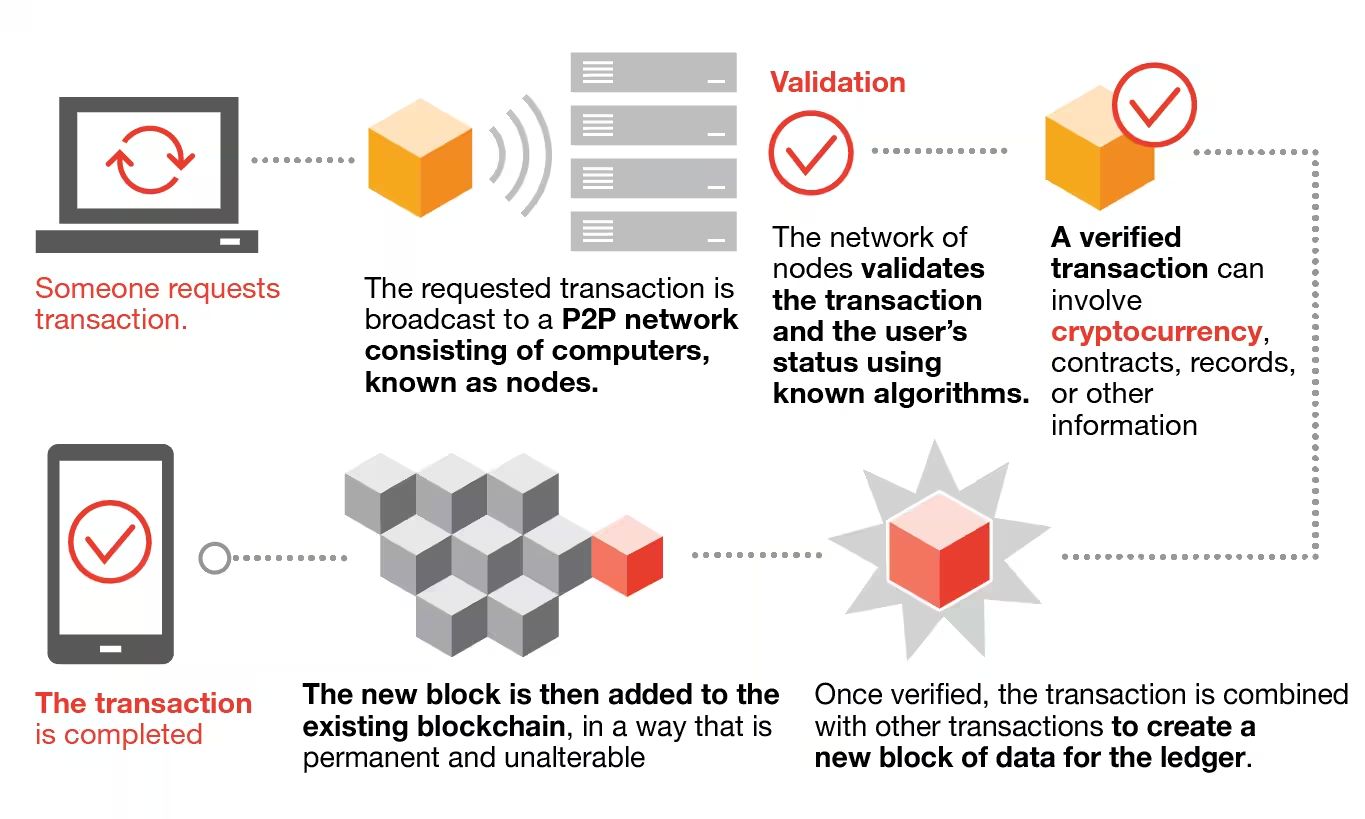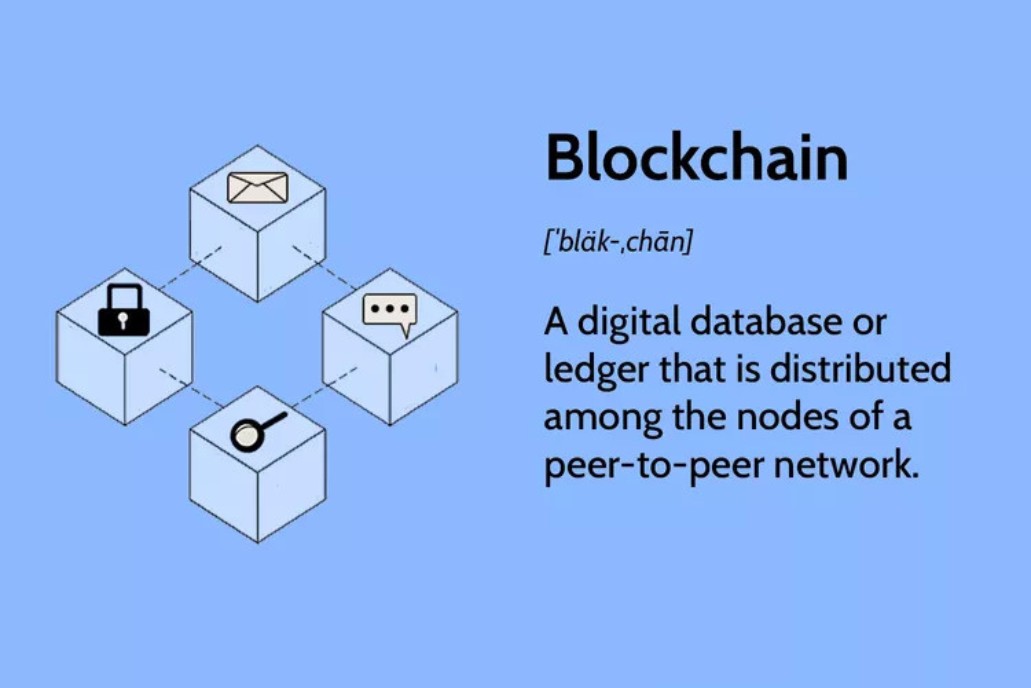Introduction
Welcome to the world of blockchain cryptocurrency! In recent years, the rise of cryptocurrencies and their underlying technology, blockchain, has revolutionized the way we view and interact with finance and digital transactions. This innovative technology has garnered significant attention for its potential to transform various industries, ranging from finance to supply chain management.
Blockchain technology is the backbone of cryptocurrencies, enabling secure and transparent transactions without the need for intermediaries such as banks or governments. Cryptocurrencies, on the other hand, are digital or virtual currencies that use cryptography for secure financial transactions, control the creation of additional units, and verify the transfer of assets.
Within the realm of cryptocurrency, blockchain serves as a decentralized ledger that records and verifies transactions across multiple computers or nodes. This distributed ledger technology ensures transparency and immutability, making it extremely difficult for malicious actors to manipulate or alter transaction records.
As blockchain cryptocurrency gains traction, it is essential to understand how this technology works, its benefits, different types of cryptocurrencies, and the challenges it faces. In this article, we will explore these aspects in detail, shedding light on the fascinating world of blockchain cryptocurrency.
What is Blockchain Technology?
Blockchain technology is a decentralized, transparent, and immutable distributed ledger that records and verifies transactions across a network of computers or nodes. It was initially introduced as the underlying technology for Bitcoin, the first-ever cryptocurrency, but its applications have since expanded beyond digital currencies.
At its core, a blockchain is a series of blocks, each containing a list of verified and encrypted transactions. These blocks are linked together in chronological order, forming a chain. Unlike traditional centralized systems, where a single governing authority maintains the ledger, blockchain operates on a peer-to-peer network, where multiple participants collectively validate and maintain the integrity of the ledger.
The key features of blockchain technology that set it apart are transparency, security, immutability, and decentralization. Transparency stems from the fact that every transaction recorded on the blockchain is open and visible to all participants. Security is ensured through complex cryptographic algorithms that protect against tampering and unauthorized access. Immutability refers to the inability to alter or delete past transactions, making the blockchain resistant to fraud and manipulation. Decentralization means that no single entity has control over the entire network, making it more resilient to potential failures.
Transactions on a blockchain are validated through a consensus mechanism, which varies depending on the specific blockchain protocol. Bitcoin, for example, uses a proof-of-work consensus, where miners compete to solve complex mathematical problems to validate transactions and receive rewards in the form of newly minted Bitcoin. Other blockchain protocols, like Ethereum, have adopted proof-of-stake or other consensus mechanisms to validate transactions.
Besides cryptocurrencies, blockchain technology has seen applications in various industries, such as supply chain management, healthcare, voting systems, and decentralized finance (DeFi). Its ability to provide secure, transparent, and efficient transactions without the need for intermediaries has the potential to disrupt and redefine traditional business processes.
Overall, blockchain technology has revolutionized the way we think about trust, security, and digital transactions. Its decentralized nature and cryptographic algorithms provide a robust framework for a wide range of applications, offering unparalleled transparency and reliability.
What is Cryptocurrency?
Cryptocurrency is a digital or virtual form of currency that utilizes cryptography for secure financial transactions, controls the creation of additional units, and verifies asset transfers. Unlike traditional currencies issued by central banks, cryptocurrencies operate independently of any central authority, such as governments or financial institutions.
The foundation of cryptocurrencies lies in blockchain technology, which ensures the integrity and security of transactions. Cryptocurrencies leverage encryption techniques to regulate the creation of new units and verify the transfer of assets. Through advanced cryptographic algorithms, users can securely store and transmit digital assets, making cryptocurrencies resistant to fraud and tampering.
One of the key characteristics of cryptocurrencies is decentralization. Rather than relying on a central authority to manage and validate transactions, cryptocurrencies operate on a peer-to-peer network of computers known as nodes. These nodes collaborate to maintain a distributed ledger, or blockchain, that records and verifies all transactions.
Another important aspect of cryptocurrencies is their limited supply. Most cryptocurrencies have a predetermined maximum supply, ensuring scarcity and preventing inflationary practices. Bitcoin, for example, has a finite supply cap of 21 million coins, which means that once this limit is reached, no more Bitcoin can be created.
Transactions with cryptocurrencies are typically conducted using digital wallets, which allow users to send and receive funds securely. Each transaction is recorded on the blockchain, making it transparent and publicly visible. While the identities of the participants remain pseudonymous, the transaction details are traceable and cannot be altered, providing a high level of security and transparency.
In addition to being a medium of exchange, cryptocurrencies often serve as investment assets. Many people buy and hold cryptocurrencies with the expectation that their value will increase over time. The volatility of cryptocurrency prices can present both opportunities and risks for investors, as the market is influenced by various factors such as market demand, technological advancements, regulatory changes, and investor sentiment.
With the surge in popularity, numerous cryptocurrencies have emerged, each with its unique features, use cases, and underlying technologies. Bitcoin, created in 2009 by an anonymous person or group named Satoshi Nakamoto, is considered the first and most well-known cryptocurrency. Ethereum, Ripple, Litecoin, and many others have also gained significant attention and adoption in the market.
Overall, cryptocurrencies are reshaping the financial landscape by providing alternatives to traditional monetary systems. With their decentralized nature, cryptographic security, and potential for disrupting various industries, cryptocurrencies offer new possibilities for online transactions and financial inclusion.
How Does Blockchain Cryptocurrency Work?
Blockchain cryptocurrency operates through a combination of blockchain technology and cryptographic principles to facilitate secure, transparent, and decentralized transactions. Let’s explore the step-by-step process of how blockchain cryptocurrency works.
1. Transaction Initiation: The process begins when a user initiates a transaction by sending a request to transfer a certain amount of cryptocurrency to another user. This transaction request includes the recipient’s wallet address, the amount to be transferred, and any additional transaction details.
2. Transaction Verification: Once the transaction request is made, it is broadcasted to a network of computers or nodes that participate in the blockchain. These nodes work together to validate the transaction by verifying the sender’s digital signature, ensuring that the user has sufficient funds, and checking if the transaction follows the predefined rules of the blockchain protocol.
3. Block Creation: Once the transaction is verified, it is grouped with other validated transactions to form a block. This block acts as a container that holds a set of encrypted transaction records, along with a unique identifier called a hash, the timestamp of creation, and a reference to the previous block in the chain.
4. Block Validation: The newly created block needs to be validated by the network before it can be added to the existing blockchain. This validation process involves solving a complex mathematical puzzle or cryptographic algorithm, known as a consensus mechanism. The most common consensus mechanism used in blockchain cryptocurrency is proof-of-work (PoW), but other mechanisms like proof-of-stake (PoS) and delegated proof-of-stake (DPoS) are also gaining popularity.
5. Block Addition: Once the block is validated, it is added to the existing blockchain, becoming a permanent part of the distributed ledger. Each block contains a reference to the previous block, which creates a chain of blocks, hence the term “blockchain.” As a result, all past transactions are stored in a sequential and transparent manner, making the blockchain an auditable and tamper-proof record of all cryptocurrency transactions.
6. Consensus and Security: The decentralized nature of blockchain cryptocurrency and the consensus mechanism ensure the security and integrity of the network. Consensus mechanisms prevent double-spending and fraudulent transactions by requiring the nodes to agree on the validity of each transaction and block before it is added to the blockchain. Additionally, the cryptographic algorithms used in blockchain technology provide secure encryption, protecting user identities and transaction details.
7. Transaction Confirmation: After a transaction is included in a block and added to the blockchain, it undergoes multiple confirmations from subsequent blocks. Each confirmation further solidifies the transaction’s validity and reduces the risk of a malicious attack attempting to alter the transaction history.
By following this process, blockchain cryptocurrency provides a decentralized, transparent, and secure platform for conducting digital transactions. It eliminates the need for intermediaries, reduces transaction costs, and enables trust among participants without relying on a central authority.
Benefits of Blockchain Cryptocurrency
Blockchain cryptocurrency offers numerous benefits that have attracted the attention of individuals, businesses, and governments. Let’s explore some of the key advantages of this emerging technology.
1. Decentralization: One of the primary benefits of blockchain cryptocurrency is decentralization. Unlike traditional financial systems that rely on central authorities, blockchain operates on a peer-to-peer network, where transactions are validated and recorded by multiple participants. This decentralization enhances security, as there is no single point of failure or vulnerability that can be exploited by malicious actors.
2. Transparency: Blockchain provides unparalleled transparency by recording and storing all transactions in a permanent and immutable ledger. Every participant in the network can view the transaction history and verify its authenticity. This transparency promotes trust and accountability, as it becomes difficult for fraudulent activities to go unnoticed. Additionally, transparent transactions can enhance supply chain management, ensuring the provenance and authenticity of goods.
3. Enhanced Security: Blockchain cryptocurrency utilizes advanced cryptographic techniques to secure transactions and prevent unauthorized access. The decentralized nature of the network, coupled with cryptographic algorithms, makes it extremely difficult for hackers to manipulate or tamper with transaction records. Unlike traditional financial systems that rely on centralized databases prone to cyberattacks, blockchain technology offers a more secure environment for storing and transmitting sensitive financial information.
4. Lower Costs: Blockchain cryptocurrency reduces transaction costs by eliminating intermediaries, such as banks or payment processors. With direct peer-to-peer transactions, users can avoid fees associated with traditional financial institutions. Additionally, blockchain’s automated processes, smart contracts, and streamlined operations reduce the need for manual verification and administration, resulting in cost savings for businesses.
5. Increased Efficiency: Traditional financial transactions often involve complex processes, paperwork, and lengthy settlement times. Blockchain cryptocurrency streamlines these processes by automating verification and reducing the need for intermediaries. Transactions can be completed quickly and efficiently, enabling real-time settlement and faster cross-border transactions. This increased efficiency has significant implications for international remittances and global financial inclusion.
6. Financial Inclusion: Blockchain cryptocurrency has the potential to empower the unbanked and underbanked populations worldwide. With minimal requirements and access to the internet, individuals can participate in the blockchain ecosystem, opening up opportunities for financial services, such as remittances, microfinance, and access to credit. By providing financial inclusion, blockchain contributes to reducing poverty and promoting economic growth.
7. Innovation and Disruption: The advent of blockchain cryptocurrency has sparked a wave of innovation, paving the way for new business models and applications. Decentralized finance (DeFi), non-fungible tokens (NFTs), and smart contracts are just a few examples of the transformative possibilities offered by blockchain technology. This innovation has the potential to disrupt various industries, including finance, supply chain management, healthcare, and more.
In summary, blockchain cryptocurrency brings a host of advantages, including decentralization, transparency, enhanced security, lower costs, increased efficiency, financial inclusion, and innovative possibilities. As the technology continues to evolve, we can expect to witness further advancements and widespread adoption, transforming the way we transact, interact, and engage with the global financial system.
Types of Blockchain Cryptocurrencies
The world of blockchain cryptocurrency is diverse and constantly evolving, with a wide range of cryptocurrencies available in the market. While Bitcoin remains the most popular and widely adopted cryptocurrency, there are numerous other cryptocurrencies, each with its unique characteristics and underlying technology. Let’s explore some of the main types of blockchain cryptocurrencies.
1. Bitcoin (BTC): Bitcoin, often referred to as the pioneer of cryptocurrencies, was created in 2009 by an anonymous person or group using the pseudonym Satoshi Nakamoto. Bitcoin operates on a decentralized network and relies on proof-of-work (PoW) consensus. It is known for its limited supply, with a maximum cap of 21 million coins, and its role as a digital store of value and medium of exchange.
2. Ethereum (ETH): Ethereum, launched in 2015 by Vitalik Buterin, is a decentralized platform that enables the development of decentralized applications (dApps) and smart contracts. Ethereum introduced the concept of programmable blockchain, allowing developers to build their applications on top of its blockchain. Ethereum also has its cryptocurrency called Ether (ETH), which is used to power transactions and operations within the network.
3. Ripple (XRP): Ripple is a blockchain-based payment protocol that enables fast and low-cost international money transfers. Unlike most cryptocurrencies, Ripple does not rely on mining and operates based on a consensus protocol known as the Ripple Protocol Consensus Algorithm (RPCA). XRP serves as the native cryptocurrency of the Ripple network and is used as a bridge currency for facilitating cross-border transactions in various fiat currencies.
4. Litecoin (LTC): Launched in 2011 by Charlie Lee, a former Google engineer, Litecoin is often referred to as the silver to Bitcoin’s gold. Litecoin operates on a similar blockchain as Bitcoin but offers faster transaction confirmation times and a different hashing algorithm known as Scrypt. It is often seen as a more lightweight and scalable alternative to Bitcoin.
5. Bitcoin Cash (BCH): Bitcoin Cash is a cryptocurrency that emerged as a result of a hard fork from Bitcoin in 2017. The main motivation behind Bitcoin Cash was to increase the block size limit of the original Bitcoin blockchain, allowing for larger and faster transactions. Bitcoin Cash aims to serve as a peer-to-peer electronic cash system and improve upon some perceived limitations of Bitcoin.
6. Cardano (ADA): Cardano is a blockchain platform that aims to provide a secure and scalable infrastructure for the development of decentralized applications and smart contracts. It utilizes a unique proof-of-stake (PoS) consensus mechanism called Ouroboros and employs a scientific research-driven approach to deliver a robust and sustainable blockchain network. ADA is the native cryptocurrency of the Cardano platform.
7. Stellar (XLM): Stellar is a blockchain-based platform designed to facilitate fast and low-cost cross-border transactions and peer-to-peer payments. It aims to bridge the gap between traditional financial systems and the world of cryptocurrencies, making it easier to move money globally. Stellar’s native cryptocurrency, Lumens (XLM), plays a crucial role in facilitating transactions and maintaining the network’s security.
These are just a few examples of the many types of blockchain cryptocurrencies available in the market. Each cryptocurrency serves a different purpose, addressing specific use cases and offering unique features. It is important to research and understand the characteristics and underlying technology of each cryptocurrency before investing or utilizing them.
Popular Blockchain Cryptocurrencies
With the rapid growth and adoption of blockchain technology, numerous cryptocurrencies have emerged, each with its own unique features and use cases. Let’s explore some of the most popular blockchain cryptocurrencies in the market today.
1. Bitcoin (BTC): Bitcoin remains the most well-known and widely adopted cryptocurrency. As the pioneer of blockchain technology, Bitcoin introduced the concept of decentralized digital currency. Bitcoin has garnered attention as a store of value and a medium of exchange. Its limited supply, strong branding, and widespread acceptance have contributed to its popularity.
2. Ethereum (ETH): Ethereum has gained significant traction as a versatile blockchain platform that enables the development of decentralized applications (dApps) and smart contracts. Its native cryptocurrency, Ether (ETH), fuels the operations within the network. Ethereum’s scalability and programmability have attracted developers and businesses to build innovative applications, making it a cornerstone of blockchain technology.
3. Ripple (XRP): Ripple is a blockchain-based payment protocol that focuses on facilitating fast and low-cost international money transfers. As a real-time gross settlement system, Ripple aims to enhance the efficiency and accessibility of cross-border transactions. Ripple’s native cryptocurrency, XRP, acts as a bridge currency, facilitating the seamless transfer of different fiat currencies.
4. Litecoin (LTC): Often seen as the silver to Bitcoin’s gold, Litecoin offers faster transaction confirmation times and a different hashing algorithm known as Scrypt. This cryptocurrency aims to be a more lightweight and scalable alternative to Bitcoin. With a strong community and widespread acceptance, Litecoin has established itself as one of the popular and respected cryptocurrencies.
5. Cardano (ADA): Cardano is a blockchain platform that focuses on security, scalability, and sustainability. Using a unique proof-of-stake (PoS) consensus mechanism called Ouroboros, Cardano aims to provide a robust infrastructure for the development of decentralized applications and smart contracts. ADA, the native cryptocurrency of Cardano, powers transactions and governance within the network.
6. Stellar (XLM): Stellar is a blockchain platform designed to enable fast and low-cost cross-border transactions and peer-to-peer payments. It aims to bridge the gap between traditional financial systems and digital currencies, making it easier to move money globally. Stellar’s native cryptocurrency, Lumens (XLM), plays a crucial role in facilitating transactions and maintaining the network’s security.
7. Chainlink (LINK): Chainlink is a decentralized oracle network that enables smart contracts to interact with real-world data and external APIs. By providing secure and reliable external data inputs, Chainlink enhances the functionality and reliability of decentralized applications. Its native cryptocurrency, LINK, incentivizes the network’s participants and facilitates value transfer.
These are just a few examples of the popular blockchain cryptocurrencies in the market. Each cryptocurrency serves different purposes and has its unique features and strengths, catering to various use cases. It is important to research and understand the underlying technology, adoption, and potential risks associated with any cryptocurrency investments or usage.
Challenges and Risks of Blockchain Cryptocurrency
While blockchain cryptocurrency presents numerous advantages, it also faces several challenges and risks that must be taken into consideration. Understanding these challenges is essential for individuals, businesses, and governments to navigate the complexities of this emerging technology. Let’s examine some of the key challenges and risks associated with blockchain cryptocurrency.
1. Scalability: Blockchain networks, particularly those utilizing proof-of-work (PoW) consensus mechanisms, face scalability limitations. As the number of transactions increases, the network’s capacity to handle a large volume of transactions may become strained, resulting in slower confirmation times and higher fees. Scaling solutions, such as layer-two protocols and blockchain interoperability, are being explored to address this challenge.
2. Energy Consumption: PoW blockchains, like Bitcoin and Ethereum, require substantial computational power, leading to high energy consumption. This has raised concerns about the environmental impact of cryptocurrencies. Efforts are underway to develop more energy-efficient consensus mechanisms such as proof-of-stake (PoS) and to explore alternative energy sources for mining operations.
3. Regulatory Uncertainty: The regulatory landscape surrounding blockchain cryptocurrencies is still evolving. Different countries and jurisdictions have varying interpretations and approaches to regulate cryptocurrencies, which can create uncertainty for businesses and users. Lack of regulatory clarity can hinder mainstream adoption and restrict innovation within the industry.
4. Security Vulnerabilities: Blockchain technology is generally considered secure due to its cryptographic principles, but no system is entirely infallible. Security vulnerabilities can arise from software bugs, smart contract vulnerabilities, or human error. The theft of cryptocurrency through hacking incidents and scams demonstrates the ongoing need for robust security measures and user vigilance.
5. Adoption and User Experience: Despite the growing popularity of blockchain cryptocurrency, mainstream adoption and user experience remain hurdles. Cryptocurrency wallets, exchanges, and user interfaces can still be complex, hindering accessibility and ease of use for newcomers. Improving user experience and creating user-friendly interfaces are crucial for wider adoption of blockchain technology.
6. Volatility and Speculation: Cryptocurrency markets are known for their high volatility, with prices often experiencing significant fluctuations. This volatility can create challenges for merchants accepting cryptocurrencies as a form of payment and for individuals seeking stability in storing value. Additionally, the speculative nature of cryptocurrency markets can lead to market manipulation and investment risks.
7. Privacy and Regulatory Compliance: While blockchain technology provides transparency, privacy concerns can arise. Public blockchains record transactions that are visible to all network participants. While participants’ identities may remain pseudonymous, transaction details could potentially be traced back to individuals. Striking a balance between privacy and regulatory compliance is an ongoing challenge in the development of privacy-enhancing technologies.
8. Governance and Consensus: Blockchain communities face governance challenges, as decisions regarding protocol upgrades, scalability solutions, and network changes must be made collectively. Achieving consensus among stakeholders can be a complex and sometimes contentious process. Effective governance mechanisms that consider diverse perspectives and encourage decentralized decision-making are essential for blockchain networks.
As blockchain cryptocurrency continues to evolve, addressing these challenges and mitigating associated risks will be crucial for its long-term success and widespread adoption. Collaboration between industry stakeholders, ongoing research and development, advancements in governance models, and regulatory frameworks will shape the future of blockchain technology.
Future of Blockchain Cryptocurrency
The future of blockchain cryptocurrency holds immense potential for transforming various industries and revolutionizing the way we transact, collaborate, and store value. As the technology continues to evolve and mature, several trends and developments are shaping the future landscape of blockchain cryptocurrency.
1. Mainstream Adoption: While blockchain cryptocurrency has made significant strides in recent years, its widespread adoption is still in its early stages. As the technology becomes more user-friendly, regulatory frameworks mature, and scalability challenges are addressed, we can expect to see increased adoption by individuals, businesses, and governments. This adoption will likely encompass not only the use of cryptocurrencies as a medium of exchange but also the utilization of blockchain technology for various applications beyond finance.
2. Interoperability and Collaboration: Interoperability between different blockchain networks and protocols will become a key focus in the future. Efforts are underway to develop standards and protocols that enable seamless communication and interaction among various blockchain ecosystems. This interoperability will facilitate the exchange of assets and data across different networks, fostering collaboration, and driving innovation.
3. Development of Central Bank Digital Currencies (CBDCs): Central banks around the world are exploring the concept of issuing their digital currencies, known as central bank digital currencies (CBDCs). These CBDCs could leverage blockchain technology to enhance payment systems, improve financial inclusion, and enable more efficient cross-border transactions. The development and implementation of CBDCs will likely play a significant role in the future of blockchain cryptocurrency.
4. Evolution of DeFi and Smart Contracts: Decentralized finance (DeFi) has emerged as one of the most promising and disruptive applications of blockchain technology. The future of blockchain cryptocurrency will see the continued growth and sophistication of DeFi platforms, allowing for more complex financial instruments, automated lending and borrowing, and decentralized exchanges. Smart contracts, which enable self-executing and programmable agreements, will play a vital role in this evolution.
5. Enhanced Privacy and Security: Improvements in privacy-enhancing technologies will address concerns surrounding transaction privacy while maintaining regulatory compliance. Developments such as zero-knowledge proofs, cryptographic algorithms, and privacy-focused protocols will provide users with better control over their data and transactions, bolstering trust and adoption of blockchain cryptocurrency.
6. Integration with Internet of Things (IoT) and Artificial Intelligence (AI): The integration of blockchain cryptocurrency with emerging technologies like the Internet of Things (IoT) and Artificial Intelligence (AI) holds tremendous potential. Blockchain can provide a secure and decentralized infrastructure for managing IoT devices, enabling seamless data sharing and secure transactions. AI can leverage blockchain’s transparency and immutability to enhance data analysis and decision-making processes.
7. Environmental Sustainability: The high energy consumption of certain blockchain networks, such as Bitcoin, has raised concerns about its environmental impact. In the future, there will be a greater emphasis on developing and adopting more energy-efficient consensus mechanisms and exploring renewable energy sources for blockchain operations. Sustainable practices and the reduction of the carbon footprint will shape the future of blockchain cryptocurrency.
As the blockchain cryptocurrency ecosystem continues to evolve, it is important to remain open to innovation, collaboration, and continuous improvement. The future holds tremendous opportunities for enhancing financial systems, driving economic growth, improving social inclusion, and unlocking new possibilities across diverse industries through the transformative power of blockchain technology.
Conclusion
The world of blockchain cryptocurrency is rapidly evolving, offering numerous opportunities and challenges. Blockchain technology, with its decentralized, transparent, and secure nature, has the potential to disrupt traditional financial systems, drive innovation, and promote financial inclusion.
We have explored the foundational aspects of blockchain technology, understanding its decentralized ledger and cryptographic principles that underpin blockchain cryptocurrency. From Bitcoin’s emergence as the pioneer cryptocurrency to the development of diverse cryptocurrencies like Ethereum, Ripple, and Litecoin, the market is filled with a variety of options to choose from.
While blockchain cryptocurrency presents benefits such as decentralization, transparency, enhanced security, lower costs, and increased efficiency, it also faces challenges. Scalability concerns, energy consumption, regulatory uncertainties, and security vulnerabilities require continuous innovations and collaboration among industry participants and regulators.
Looking to the future, we anticipate increased mainstream adoption of blockchain cryptocurrency, with a focus on interoperability, regulatory frameworks, and the development of central bank digital currencies (CBDCs). Trends such as DeFi, smart contracts, enhanced privacy, integration with IoT and AI, and environmental sustainability will shape the future landscape.
Blockchain cryptocurrency holds tremendous potential to transform various industries, foster economic growth, and promote financial inclusion. It is important for individuals, businesses, and governments to stay informed, adapt to evolving technologies, and embrace the opportunities that blockchain offers.
As blockchain cryptocurrency continues to evolve, it is crucial to strike a balance between the benefits and risks associated with the technology. By addressing challenges, improving user experience, fostering collaboration, and maintaining regulatory compliance, we can harness the full potential of blockchain to create a more decentralized, transparent, and inclusive financial ecosystem.
As you venture into the world of blockchain cryptocurrency, keep exploring, learning, and staying updated on the latest developments. Embrace the opportunities, manage the risks, and be part of the exciting journey that is transforming the way we transact and interact in the digital era.

























